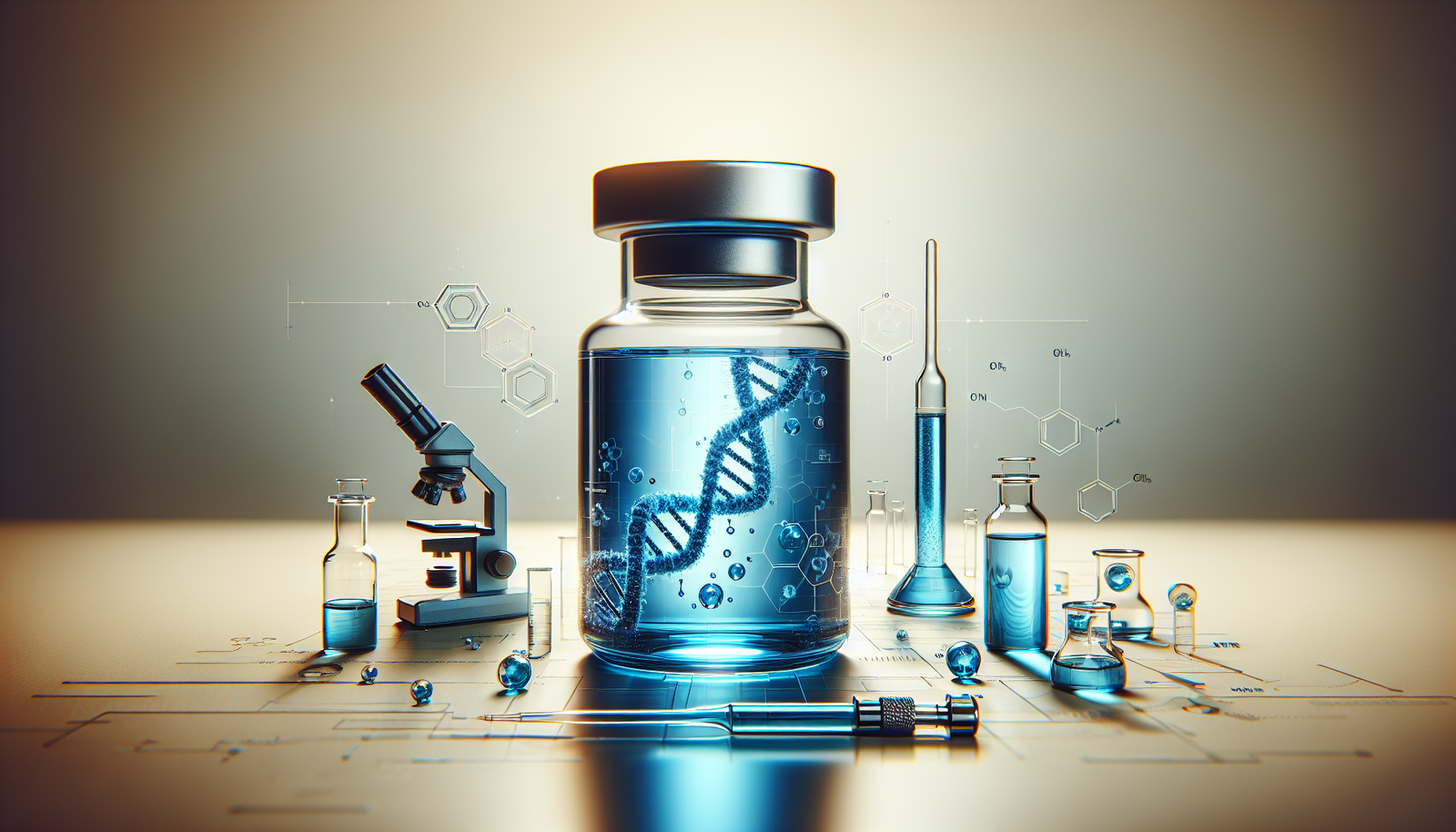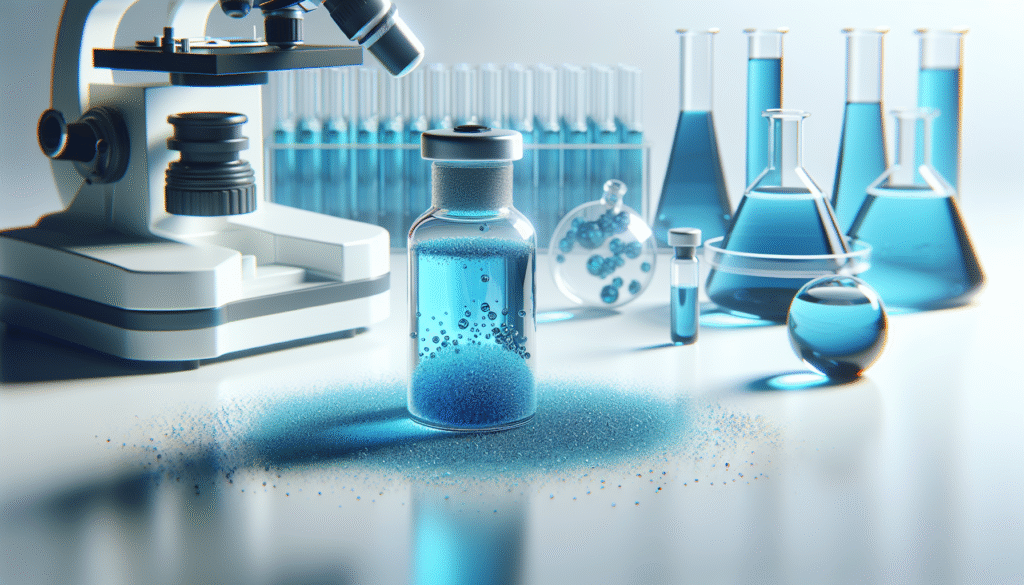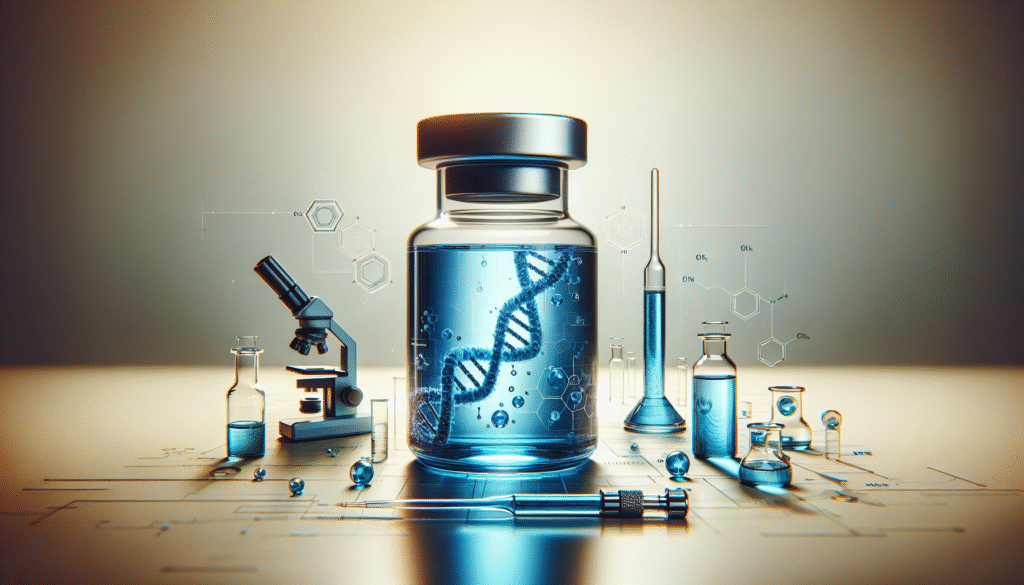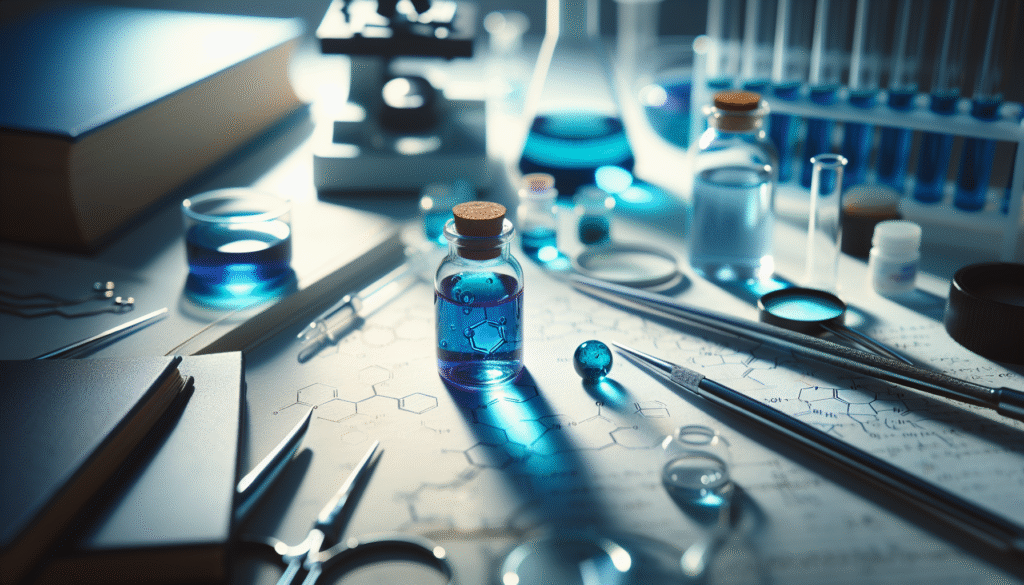
What if one compound could revolutionize various fields of science? Methylene blue may emerge as that remarkable compound, a versatile dye with numerous applications spanning biology, chemistry, medicine, and more. This article elaborates on the top ten applications of methylene blue, shedding light on its pivotal role in scientific advancements and potential breakthroughs.

Understanding Methylene Blue
Methylene blue, a synthetic dye, is known for its vivid blue color and extensive historical use as a staining agent. Initially synthesized in the 19th century, its unique chemical structure enables it to perform multiple functions across various scientific domains. By understanding its properties and applications, you can grasp the significant impact methylene blue has across diverse fields.
Chemical Properties of Methylene Blue
Methylene blue is identified chemically as thionine and carries the formula C16H18ClN3S. It exhibits unique redox properties, making it an invaluable compound for scientific research. The dye undergoes a reversible oxidation and reduction process, which enables its application in various biological and chemical assays.
Notable Features
- Color Change: One of the striking features of methylene blue is its color change from blue to colorless when reduced. This feature is utilized in various experiments and diagnostic techniques.
- Solubility: Methylene blue is soluble in water, allowing easy preparation of solutions for experiments.
Grasping the significance of these properties will help you appreciate the numerous applications of methylene blue in science.
Application 1: Biological Staining
Methylene blue was first employed as a biological stain, contributing to imaging and analysis in microbiology and histology. You can enhance your understanding of cellular structures by using methylene blue to visualize certain components within cells.
Cellular Visualization
In microbiology, methylene blue serves effectively to stain bacteria, making it easier to observe under a microscope. For instance, it binds to nucleic acids and proteins, which emit contrasting colors, enhancing visibility.
Histological Uses
In histology, you can use methylene blue to highlight structures in tissue samples, enabling detailed examination of various cellular components. These staining properties allow researchers and medical professionals to diagnose diseases more accurately.
Application 2: Antimicrobial Agent
The quest to find effective antimicrobial agents continues to be an essential endeavor in healthcare. Methylene blue has demonstrated antimicrobial properties against a broad spectrum of bacteria and fungi.
Mode of Action
Methylene blue exerts its effects through the inhibition of microbial respiration, leading to increased oxidative stress in microorganisms. This property can enhance its effectiveness as an antimicrobial agent in clinical settings.
Clinical Applications
In particular, you can find methylene blue used in treating urinary tract infections and other localized infections. Its role as an auxiliary treatment showcases its utility beyond a mere dye.
Application 3: Antioxidant Properties
Research into the antioxidant properties of methylene blue has gained traction in recent years. You may wonder how a simple dye can act as an effective antioxidant.
Mechanism of Action
Methylene blue reduces oxidative stress by scavenging free radicals and donating electrons to neutralize harmful species. This behavior plays a crucial role in reducing cellular damage, offering protective effects in various biological systems.
Implications in Neuroprotection
This capability offers potential neuroprotective effects, suggesting its application in neurodegenerative diseases such as Alzheimer’s and Parkinson’s. Researchers are exploring its efficacy in preventing cell death associated with oxidative stress in neuronal cells.

Application 4: Photodynamic Therapy
A pioneering application, photodynamic therapy (PDT), utilizes methylene blue in treating certain cancers and skin disorders. You may find this innovative technique remarkable, as it combines light exposure with the therapeutic properties of methylene blue.
Mechanism of Photodynamic Action
In PDT, methylene blue is administered to the patient and localized in the targeted tissues. Upon exposure to specific wavelengths of light, methylene blue becomes activated, generating reactive oxygen species that can destroy cancer cells.
Advantages of PDT
PDT demonstrates several advantages over traditional therapies, including targeted action, minimized damage to surrounding tissues, and reduced side effects. Its application in skin lesions and superficial cancers highlights the potential for methylene blue in modern medicine.
Application 5: Detection of Nitric Oxide
Methylene blue serves a critical role in detecting nitric oxide, an essential signaling molecule in various physiological processes. Understanding this application can enhance your knowledge of cardiovascular and neurological health.
Measurement Techniques
In scientific research, methylene blue is utilized in various analytical techniques to quantify nitric oxide levels. The reaction between methylene blue and nitric oxide allows researchers to measure concentration accurately, enabling studies in systemic vascular regulation.
Implications for Research
This application has significant implications for studying conditions such as hypertension, atherosclerosis, and other cardiovascular diseases. By quantifying nitric oxide levels using methylene blue, you can gain insights into the underlying mechanisms of these conditions.

Application 6: Methemoglobinemia Treatment
Methylene blue holds historical significance in treating methemoglobinemia, a condition where hemoglobin is altered and unable to carry oxygen effectively.
Treatment Protocols
As a treatment, methylene blue acts as a reducing agent, converting methemoglobin back to functional hemoglobin. Administering the compound intravenously provides a rapid response, making it an essential part of emergency medicine for this condition.
Pathophysiological Insights
Understanding methemoglobinemia and the use of methylene blue in its treatment deepens your comprehension of oxygen transport physiology and related disorders. This application underscores the clinical importance of methylene blue in acute medical situations.
Application 7: Neuroscience Research
The uniqueness of methylene blue extends to its implications in neuroscience research. Your understanding of cognitive processes and neurodegenerative diseases can evolve through its applications in this field.
Mechanistic Insights
Studies have indicated that methylene blue may enhance mitochondrial function, providing benefits to neuronal health. This capability can lead to improved energy metabolism, which is vital for cognitive function.
Neuroscience Applications
Researchers are investigating the use of methylene blue in models of Alzheimer’s disease, seeking to understand its impact on memory and cognitive impairment. This line of research presents an exciting avenue for future therapeutic interventions.

Application 8: Indicator in Chemical Reactions
Methylene blue functions as a valuable indicator in various chemical reactions and redox processes. By understanding its role in chemistry, you enhance your skills in analytical methods.
Redox Indicator
Due to its color-changing properties, methylene blue is employed as a redox indicator in titrations, showcasing its ability to visually highlight changes during a reaction. This role is significant in the classroom and laboratory settings.
Broader Chemical Applications
You can further utilize methylene blue in chemical analysis to monitor the progress of reactions, allowing for precise control and observation during experimental procedures. This versatility demonstrates the compound’s role as a multifaceted tool in chemistry.
Application 9: Textile and Dye Industry
The dye industry leverages methylene blue for its vibrant color and stability in various textile applications. Your interest in material science may find relevance in this application.
Textile Dyeing
Methylene blue offers a rich blue hue, making it popular in dyeing fabrics. Its effectiveness as a dye ensures longevity and resistance to fading, which is crucial for consumer products.
Implications for Sustainability
The ongoing exploration of eco-friendly dyeing processes positions methylene blue within the discussions of sustainability in the textile industry. Understanding this application aids in comprehending the environmental impacts of chemical processes in manufacturing.

Application 10: Veterinary Medicine
Beyond human treatments, methylene blue has applications in veterinary medicine. You can witness its role in treating various conditions in animals, enhancing your understanding of its diverse use.
Treatment in Veterinary Care
In veterinary settings, methylene blue may be used to treat methemoglobinemia in dogs and cats. Its quick action mirrors its effectiveness in humans, showcasing the compound’s importance across species.
Research and Future Directions
As research expands into veterinary applications, understanding the use of methylene blue in animal health will provide a broader perspective on its utility in therapeutic contexts. The potential for new applications continues to evolve.
Conclusion
Methylene blue stands out as a remarkable compound in the scientific community due to its diverse applications across multiple domains. From biological staining and antimicrobial activities to innovative therapies in cancer treatment and potential neuroprotective effects, the compound’s versatility cannot be overstated.
By understanding these top ten applications, you gain insight into how this synthetic dye plays a pivotal role in scientific advancement. As research continues to unfold, methylene blue may very well lead to transformative developments in various fields, further emphasizing the need to appreciate this multifaceted compound’s significance. The future of methylene blue looks promising and offers the potential for even more innovative uses in science and medicine.